Let’s face it — the thing I like best about London, is that there is always something new to discover, no matter how many times you have visited the city. There is an urge every time to see the city through new lenses. Last time I wanted to see it in black and white and capture the familiarity it builds around you. It dealt with knowing little secrets, a little history and a little trivia. But then, I could afford that because of the luxury of time. This time it was a three day stop-over, but the urge in me to discover something new took over yet another time. So, this time it was a new and absolutely fascinating neighborhood, and a hell of an unique restaurant that I stumbled upon.
Just north of Soho, near bustling Oxford Street, sits central London’s hidden neighborhood: Fitzrovia. Home to louche, boho types in the late 19th century (the Pre-Raphaelites and Oscar Wilde lounged in its bars), Fitzrovia’s leafy streets are lined with Edwardian-era apartments, neoclassical mansions, and onetime warehouses. The locality was first developed by Charles Fitzroy, lord of the manor of Tottenhall from 1757. ( You guessed right! The bordering tube station and the road Tottenham Court, is indeed derived from this name).
Fitzroy built the neighbourhood for the upper classes, but they soon migrated south-westwards to Belgravia and Mayfair neighbourhoods, forcing subdivision of the aristocratic houses into workshops, studios and rooms to let. Immigrants from France and neighbouring countries crowded in and helped establish the district as a centre for the furniture trade by the end of the 18th century. In fact, back then, George Bernard Shaw lived with his mother at 37 Fitzroy Street in the early 1880’s and then in Fitzroy Square from 1887 until his marriage in 1898. So, you can very well imagine that some of the better contributions to the arts—poets, designers, and musicians did emerge from this central London neighborhood’s dimly-lit public houses, music venues, and speakeasies. Closer ‘home’, the 189m tall BT Tower is roughly in the centre of the neighbourhood.
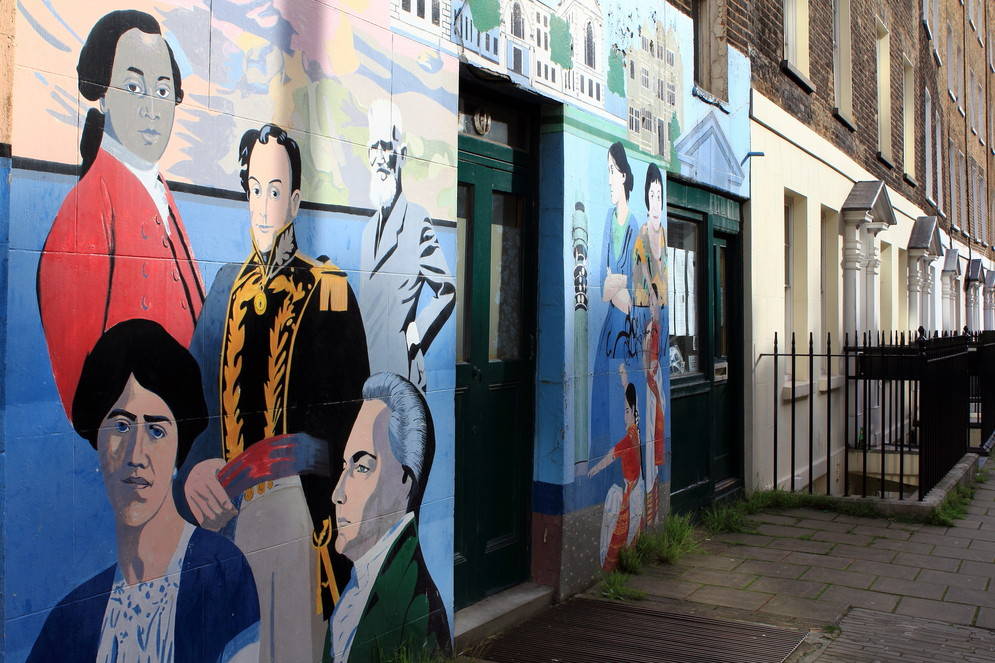
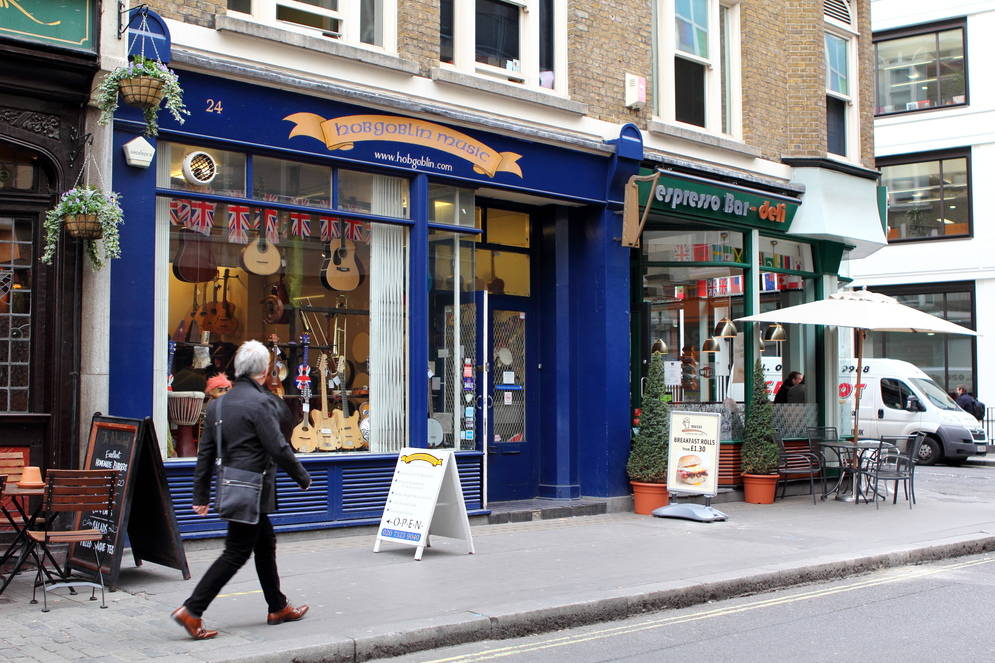
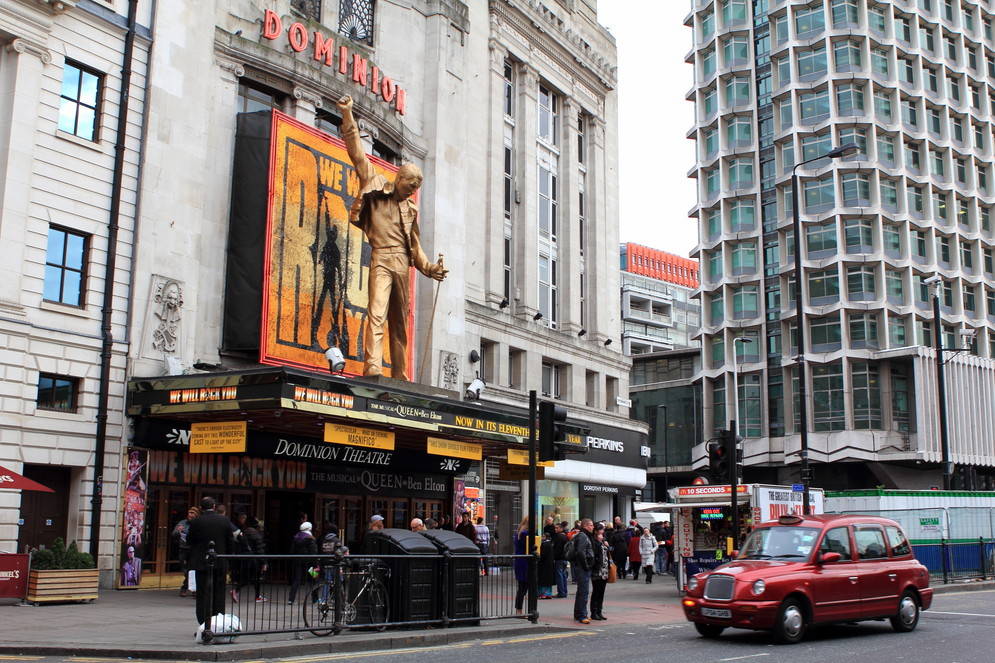
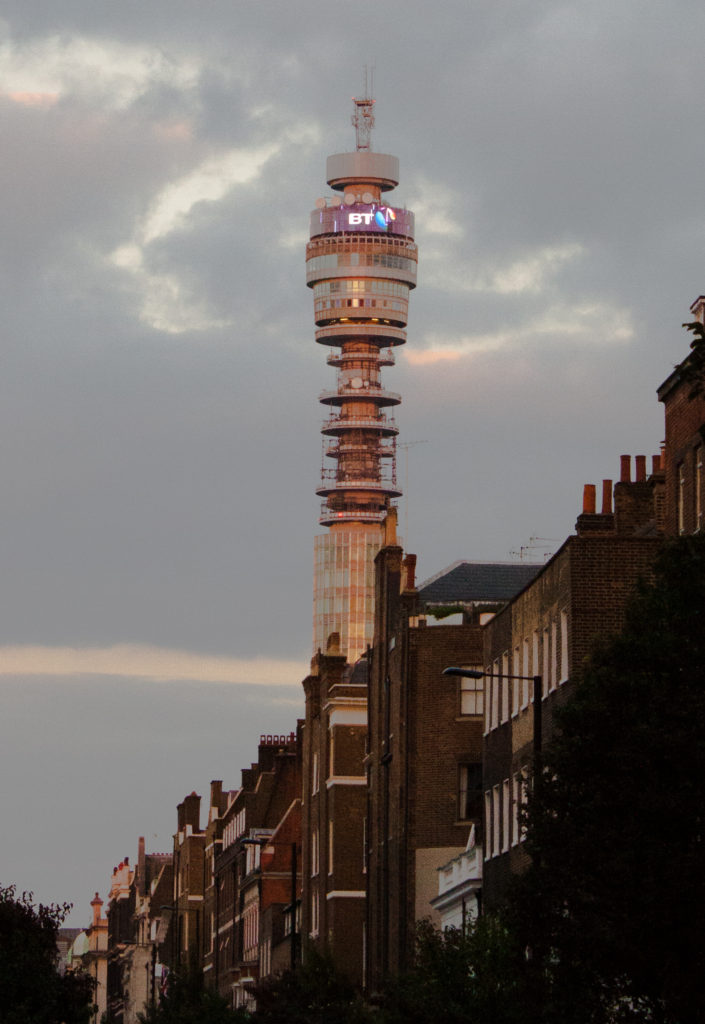
An ocean of concrete, industry, telecommunications, fashion, advertising, art houses, residential facades with a whiff of bohemia to it. A hijibiji of sorts. Chaotic and evocative.
It is in this neighbourhood, that I discovered Archipelago. Along with the lovely Fiona, a pleasant little walk led us to this restaurant. It offers a menu which animal rights activists would kill for (literally kill for). Actually if you don’t eat animals, just look away now.
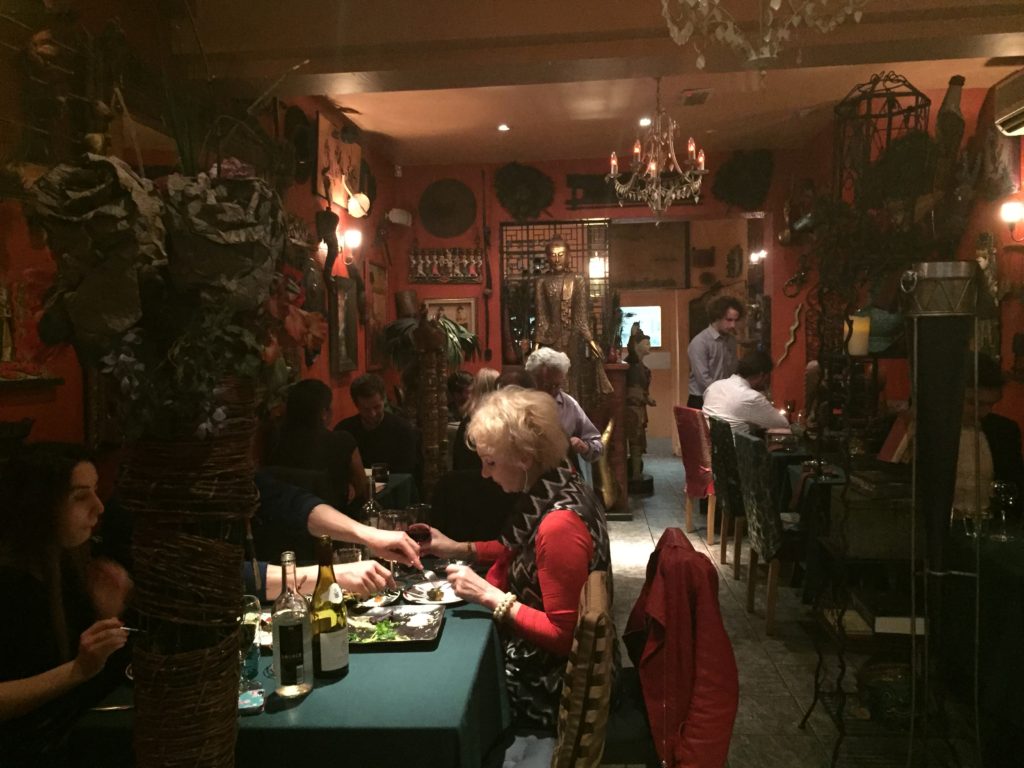
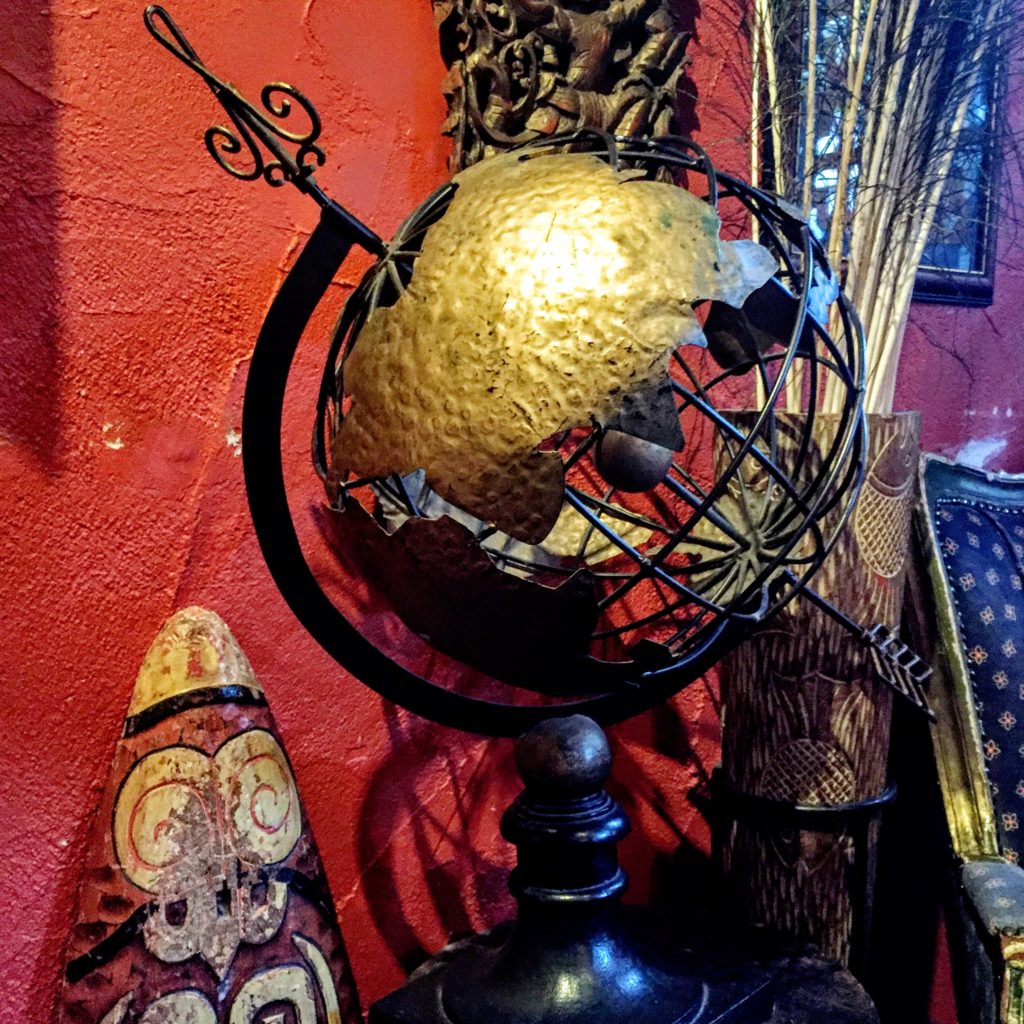
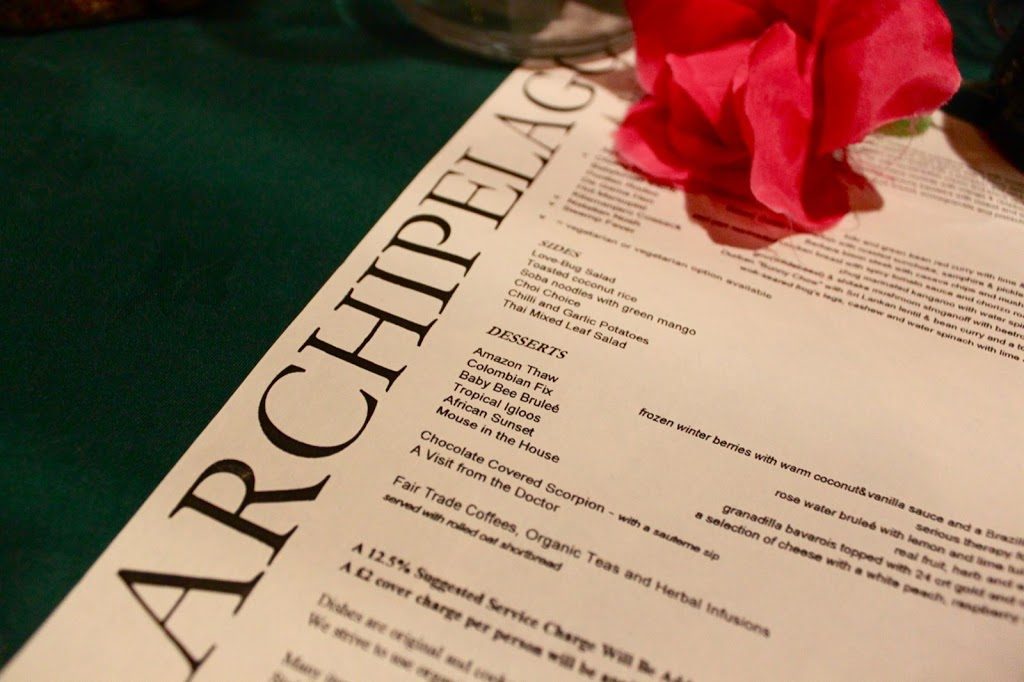
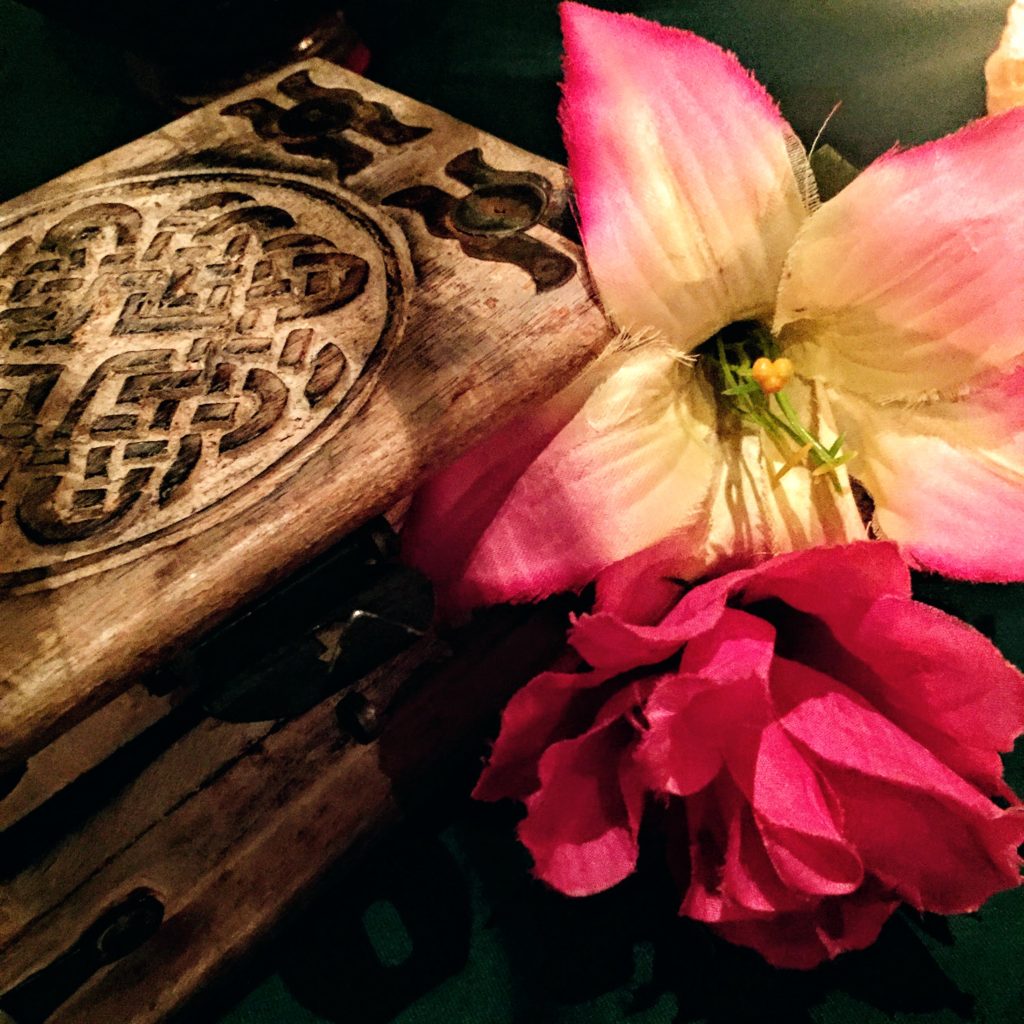
The experience starts from the minute you walk in.
(It really starts earlier that day when you receive a call from the restaurant giving you your secret password… but that only happens if you answer your phone.. !)
Set up by South African Bruce Alexander, 11 years back, who wanted to move away from London’s ‘samey’ restaurants, it sources its food from all over the world – crocodile from Zimbabwe, Kangaroo from Australia, Gnu from South Africa and locusts and crickets from the rather less exotic Isle of Wight!
Wooden tribal masks, carved elephants and peacock feathers adorn the walls. A blinged-up Buddha in a sequined crop top watches diners from a corner. On the table, a treasure chest awaits with the menu printed on a tea-stained scroll. It’s rather like stumbling into the attic of a well-travelled but slightly eccentric aunt! Snuggled deep within the winding roads between Regents Park and Oxford Circus, this exotic eatery offers global delicacies of an exciting, stimulating and often unexpected nature. A truly hidden diamond and one that not many Londoners are familiar with, Archipelago will make your jaw drop, your mind dream, and your eyebrows curl with every stunning plate.
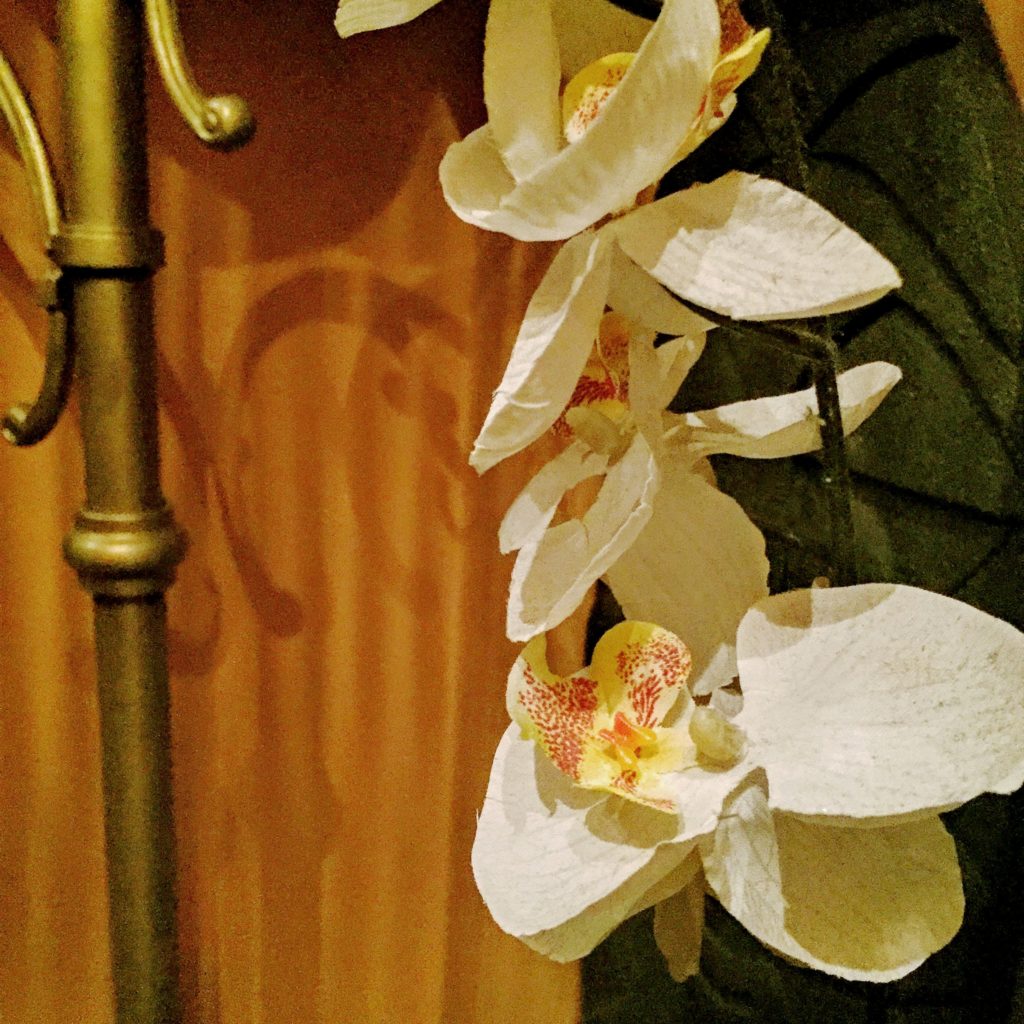
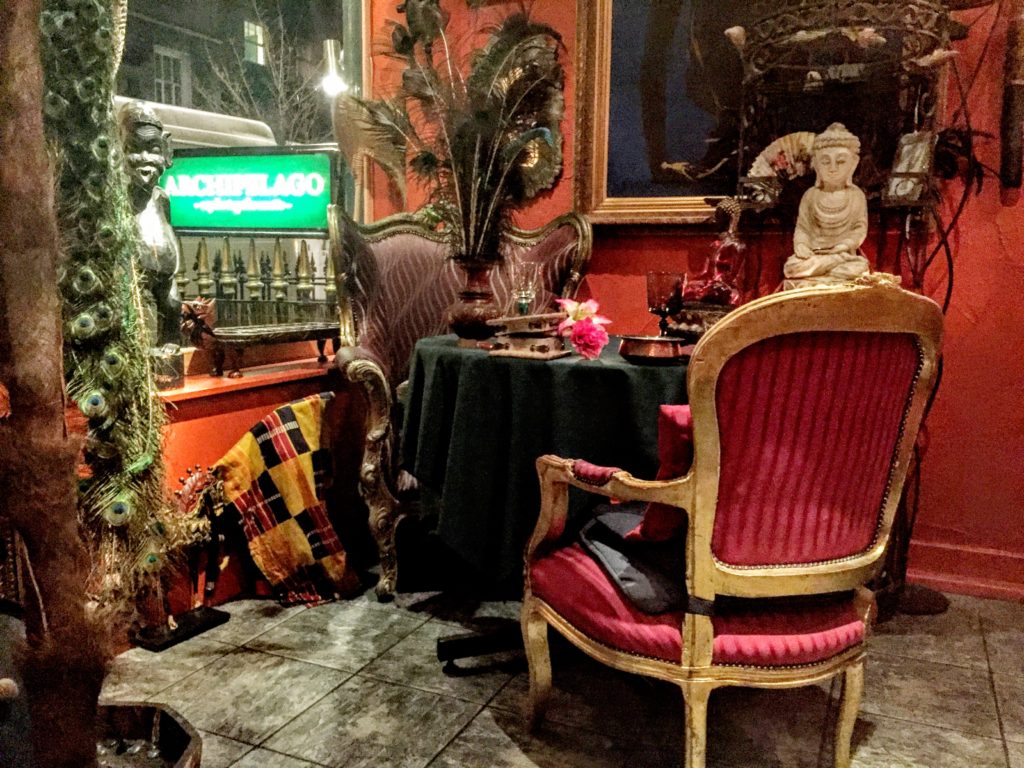
It’s a bold claim but the 35-seater restaurant has undoubtedly been a success. It’s never had to advertise – word of mouth being a powerful enough tool to drive people through the door – and it’s even seen some famous faces. I read somewhere that Prince William and Kate had an intimate soiree there (well, as intimate as it can be with four bodyguards).
So with a glass of rose in hand, it was time to sink our teeth into the food. First up, crocodile- very emphatically called ‘Cayman Islands’. Creedon- the chef who trained as a classical French chef , as his previous engagement, has effectively tried to fit as many different cuisines on one plate – crocodile from Africa, Thai curry paste, Chinese plum sauce and vine leaves from Greece – and somehow it works quite well.
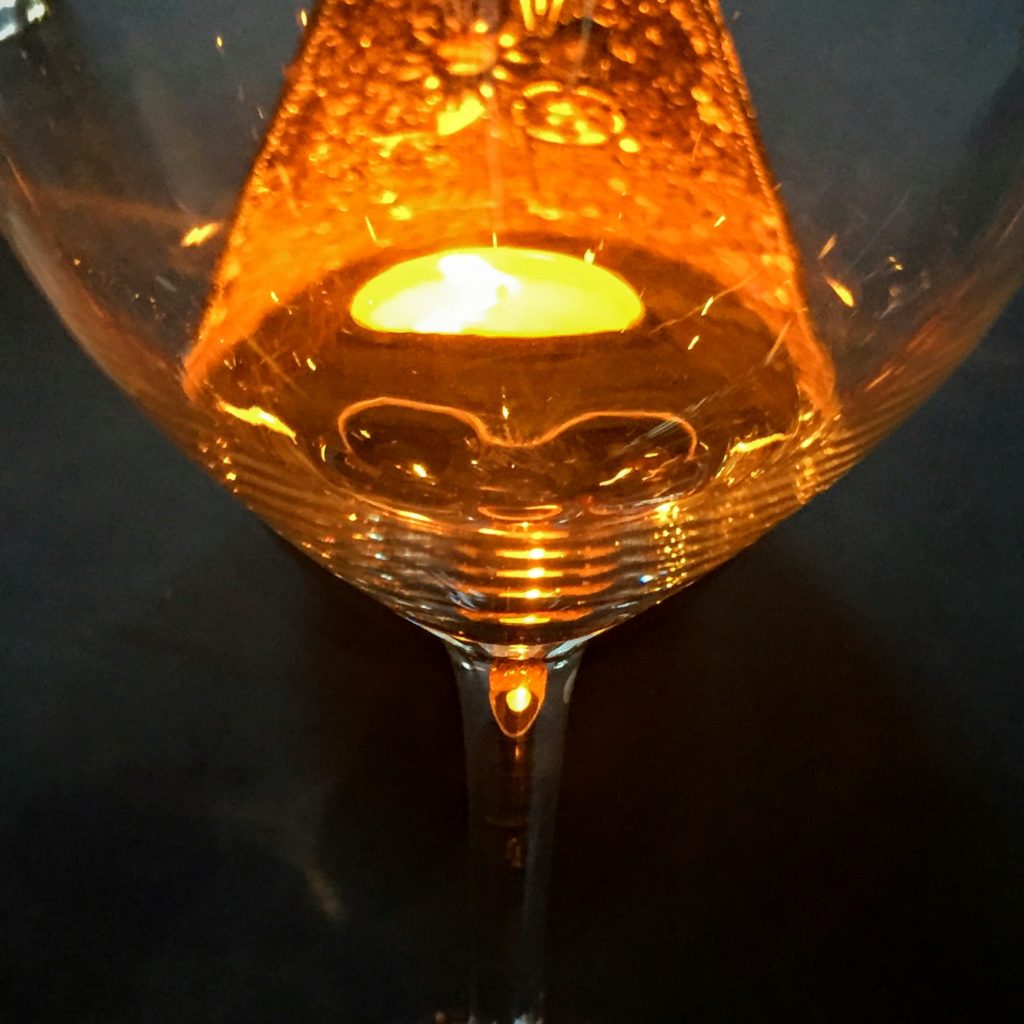
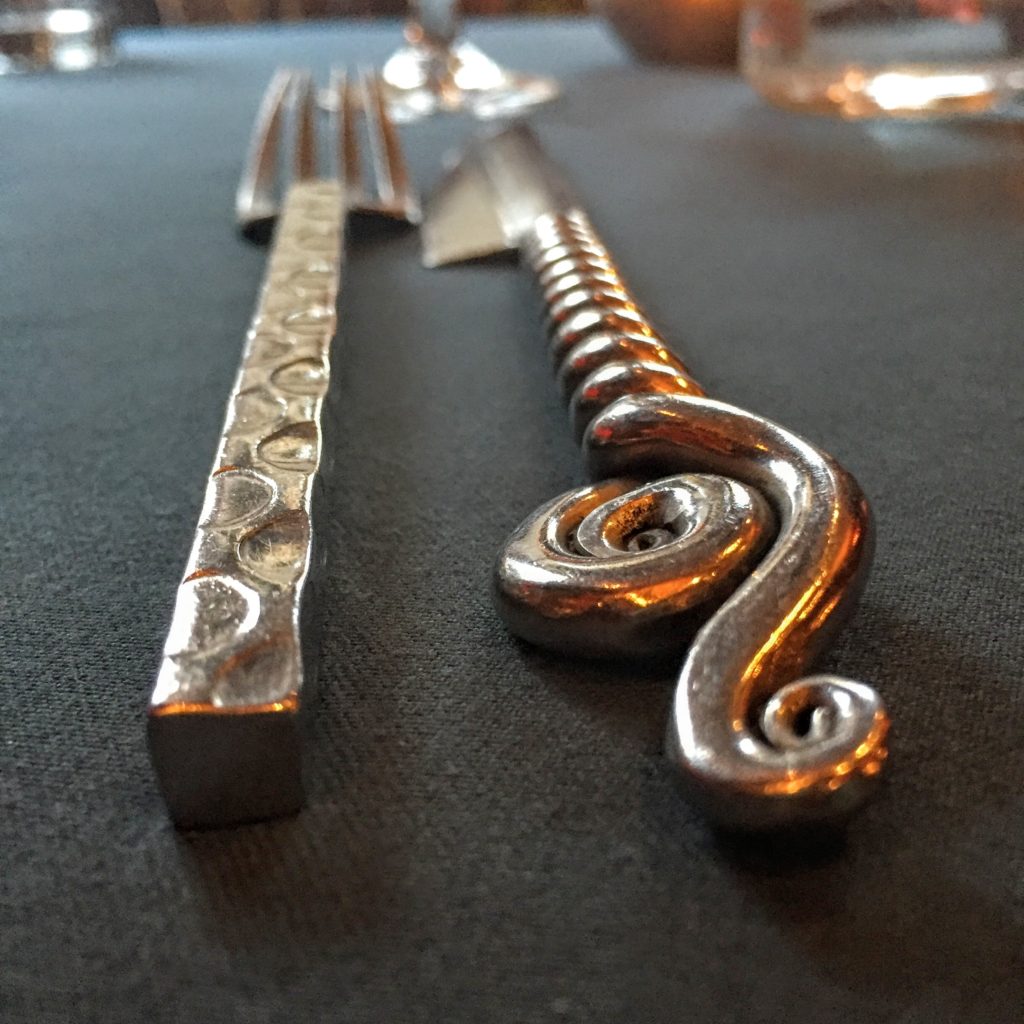
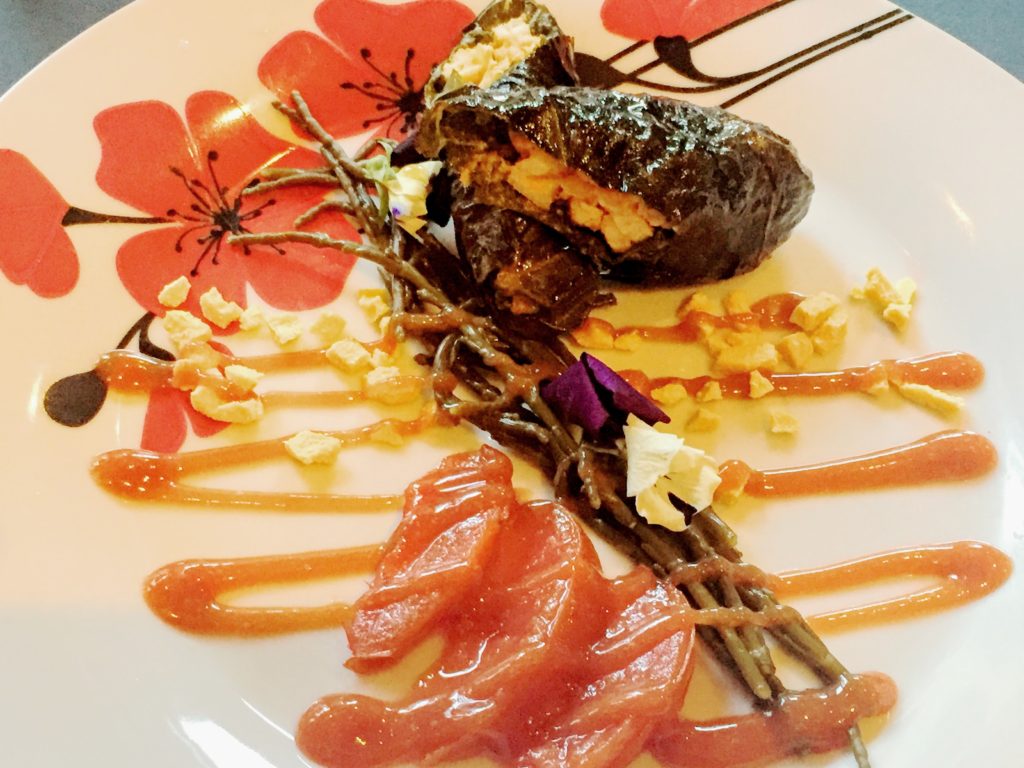
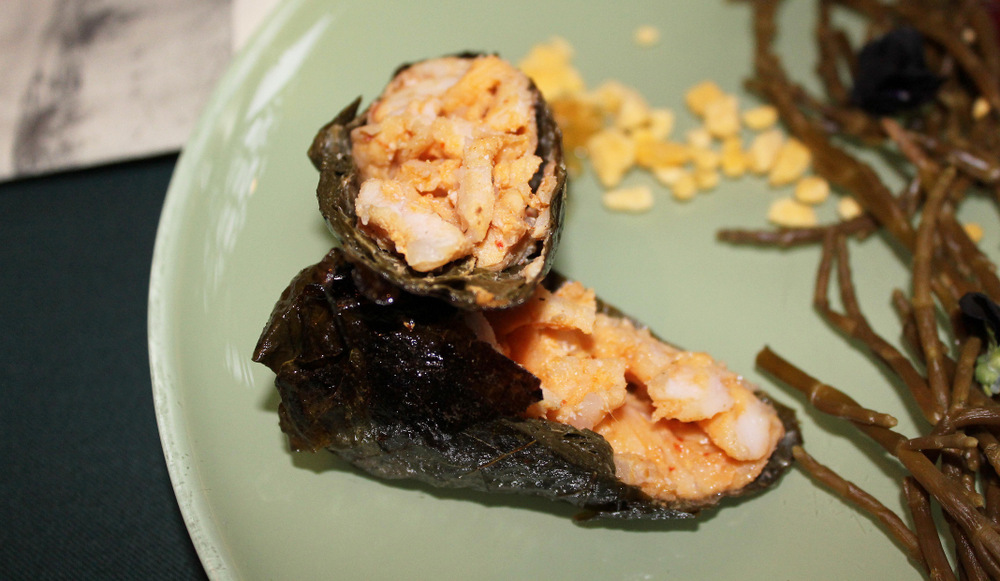
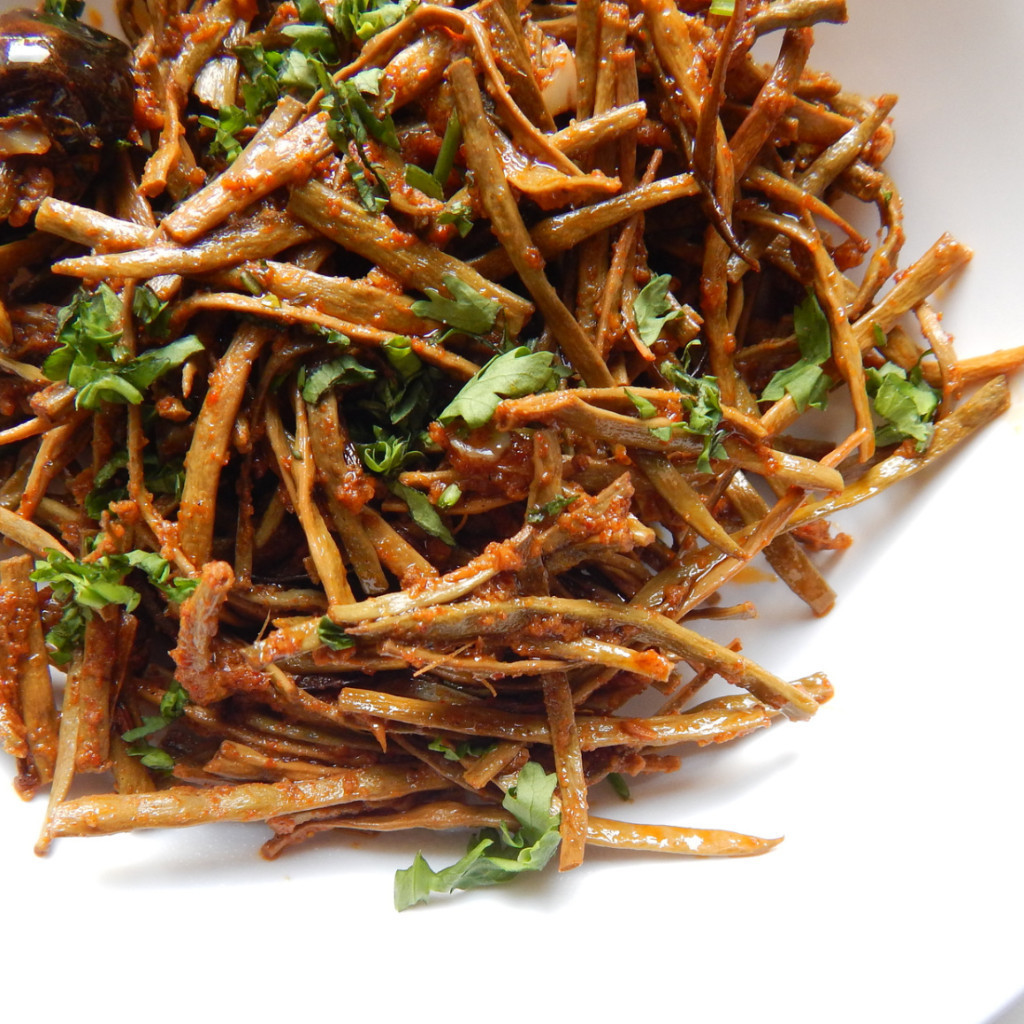
This was, of course, a first time for me, and I think the taste, soft and flaky, is somewhere between a chicken and a lobster. The penang curry marinade and the slightly bitter vine leaves it’s wrapped in kept it moist and salty, perfectly complemented by the deep plum dipping sauce. It was laid graciously on a bed of samphire, another new vegetable that was on my discovery platter that day. Its a plant of the parsley family, which grows on rocks and cliffs by the sea, with aromatic leaves and a twig like appearance. Resembles the Rajasthani ker sangri, if anyone has had that before?
Fiona played it safe all along with her ordering, except for the crocodile that we shared!
She ordered chicken. Saigon Seduction is – quite prosaically – an Oriental chicken curry with poppy seed rice and deep fried diced potatoes.
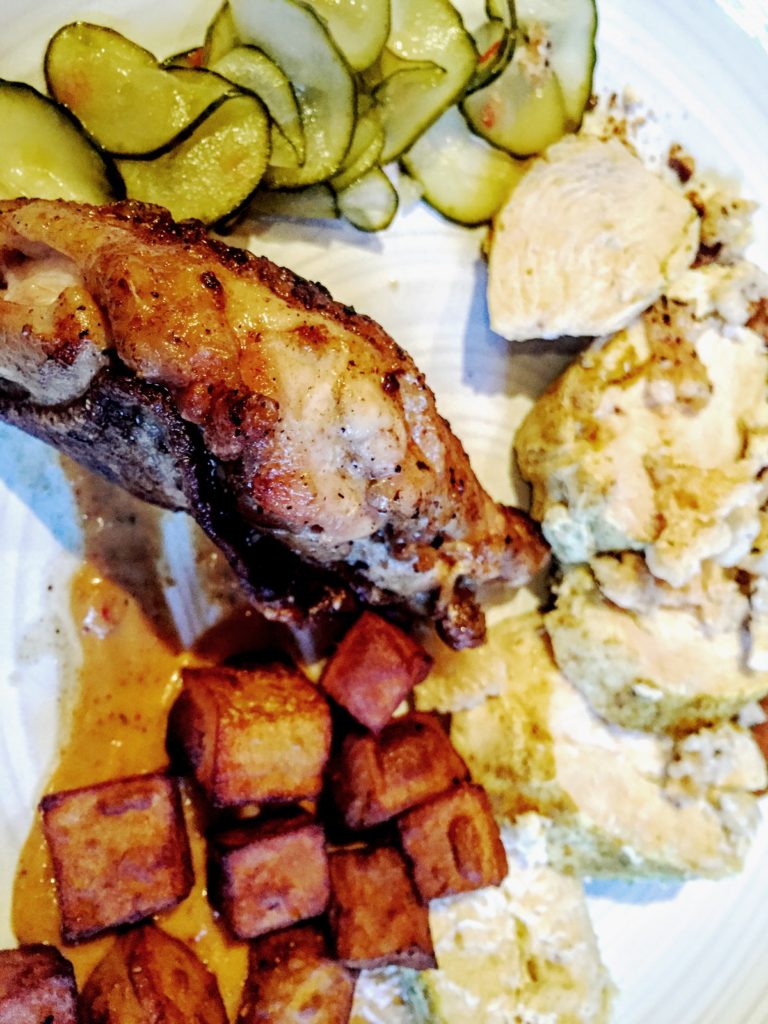
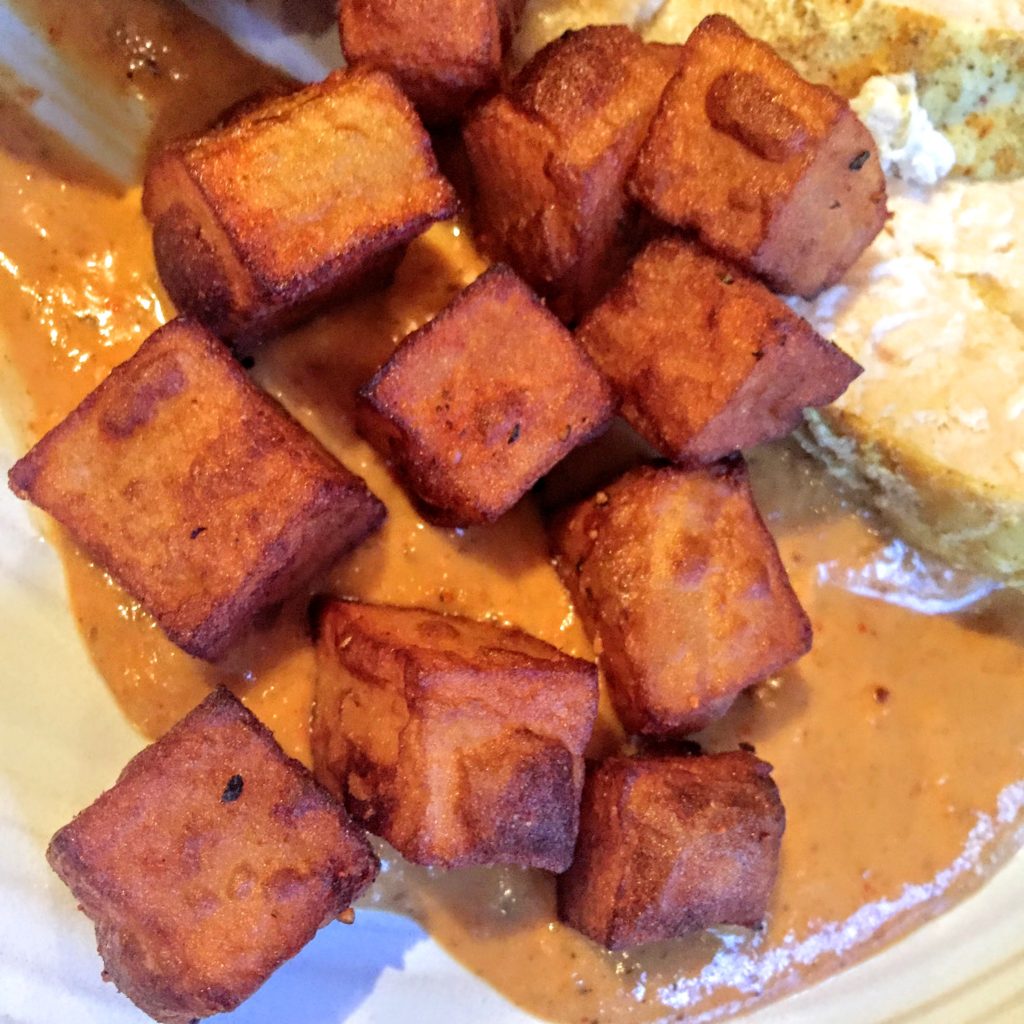
Then came the kangaroo, in skewers, aptly called ‘Hot Marsupial’
I have to admit I was a bit nervous partaking in this strange new meat eating experience. However, I decided to give it a gander, and I am happy as hell to have hopped up to the plate. I wasn’t given a steak knife, and was cheerfully surprised at the ease in which I cut the meat with a dinner knife. I had to clear my mind of the image of some jumpy animal jumping around in the landscapes of Australia as I brought the fork up to my mouth. But, upon first chew I was elated to be partaking in this marsupial dining venture!
The meat was seared to a beautiful rare/medium rare and beautifully tender. It created a sumptuous savory bite that damn near melted in my mouth like butter, but not quite. The kangaroo itself was much less gamy than I had anticipated, I thought it would resemble venison, or even rabbit. It was a soft, luxurious flavor that harmonized extraordinarily well with the pepper marinade. Again, there were many continents and countries residing on this single plate. The roo from Australia, the red onion farofa from Brazil( a carb component made of toasted cassava flour mixture, with few nice spices), and the hot and sweet guandilla pepper salad from Spain, all packed in delicious goodness! With that was candied beetroot. I had fun pairing each bite of roo with a different ingredient from the salad- the sultry meat and the burst of the unexpected flavours of these accompaniments. The contrasting components brought out different characteristics of the kangaroo with every bite.
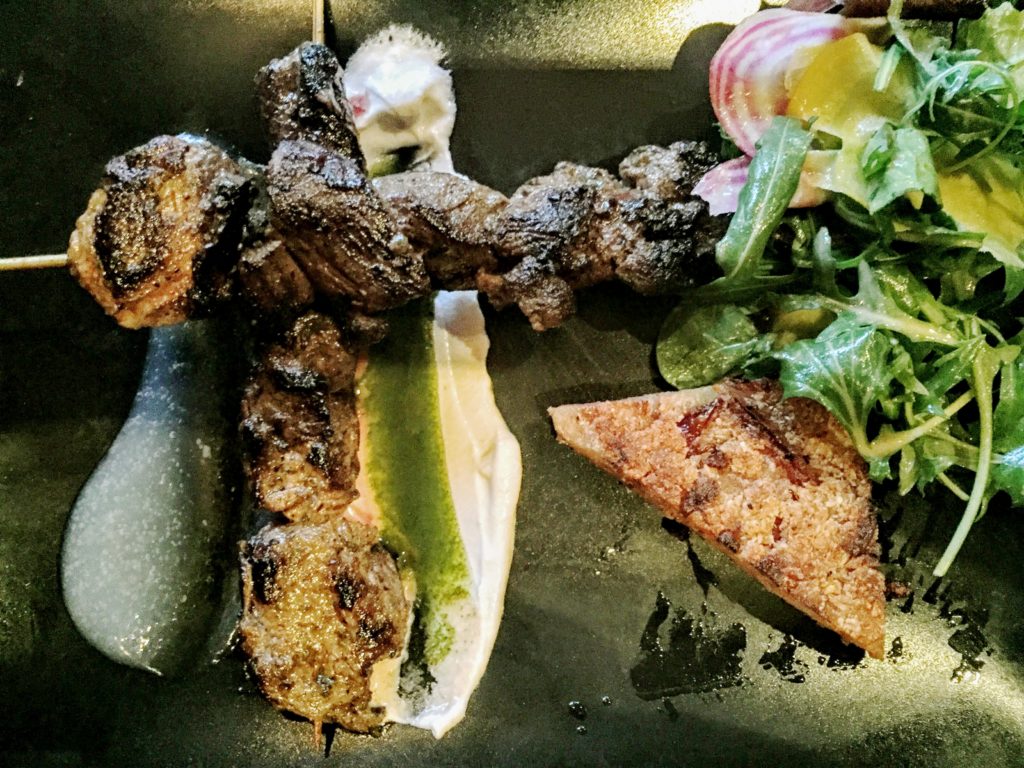
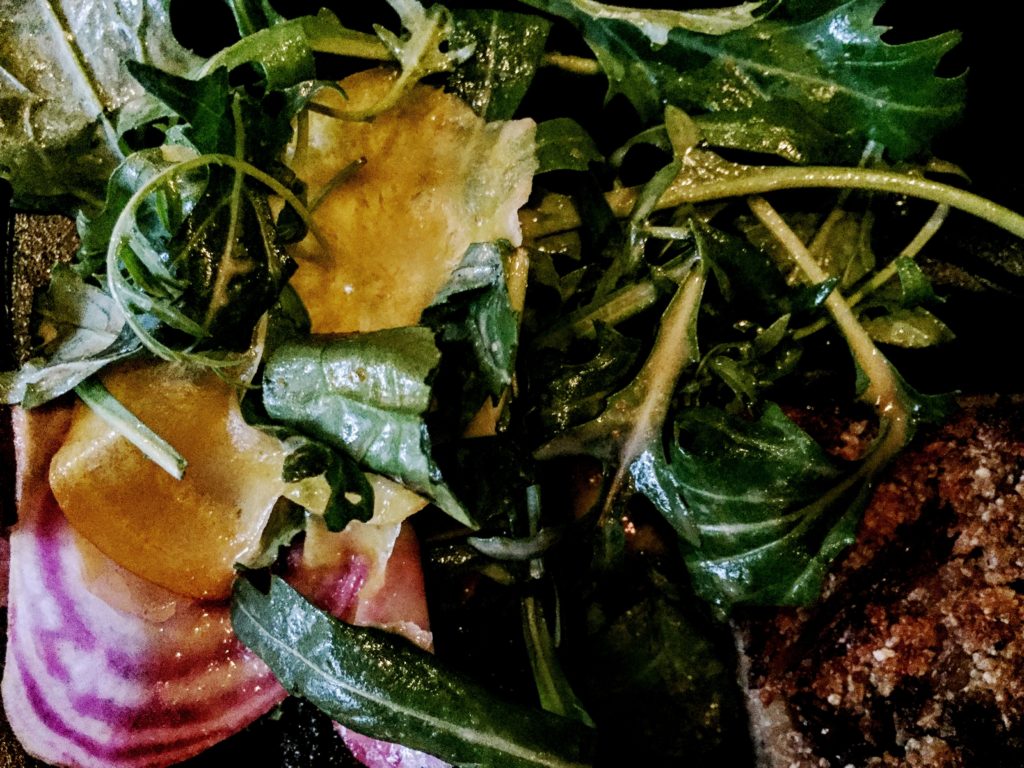
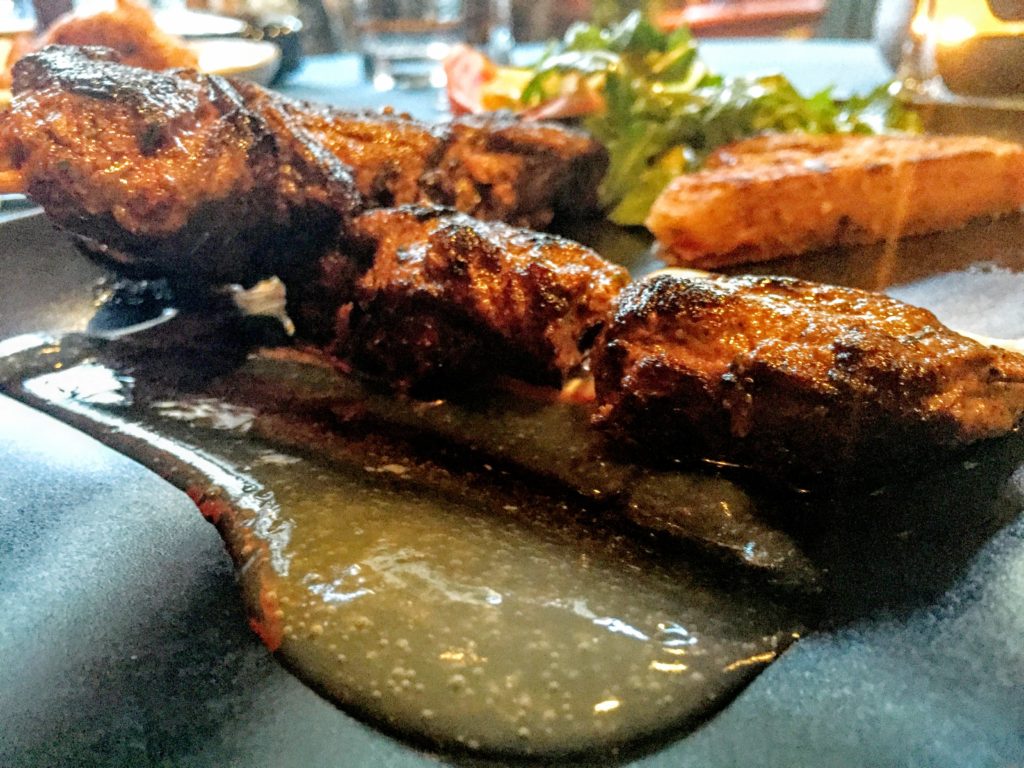
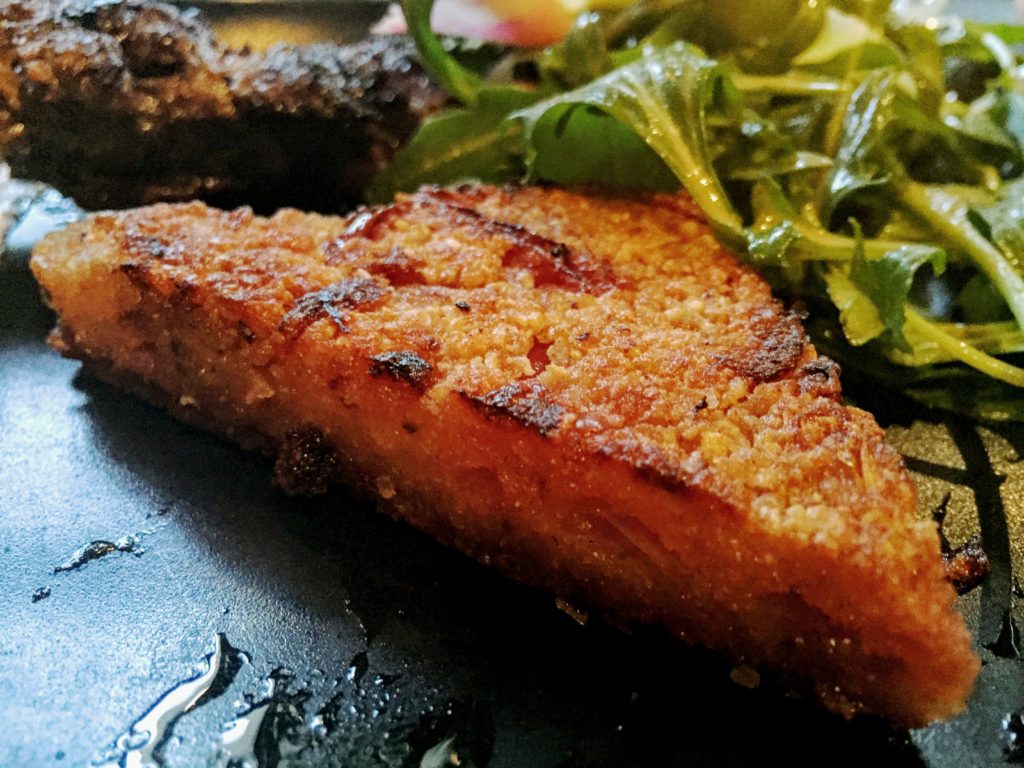
We skipped the exotic sides of love-bugs and silkworms, and dashed for the desserts. Not everyday do you hear this sentence in a restuarant in a serious tone : “We’re out scorpions and beetle, but we do have some crushed worms”. Thank God! Between us, we had two ‘safe’ desserts’- one was called the ‘Pharaoh’s treasure’ and the other innovatively called ‘An Englishman abroad’. The first one was a chocolate and cardamom soufflé served with white chocolate and curry ice cream and topped with 24 carat gold leaf. Adventurous? Or majestic? You tell me ! The other one was a jelly made of hibiscus, acai berry and raspberry, served with avocado custard and pistachio cream. As lovely as the lovely Fiona!
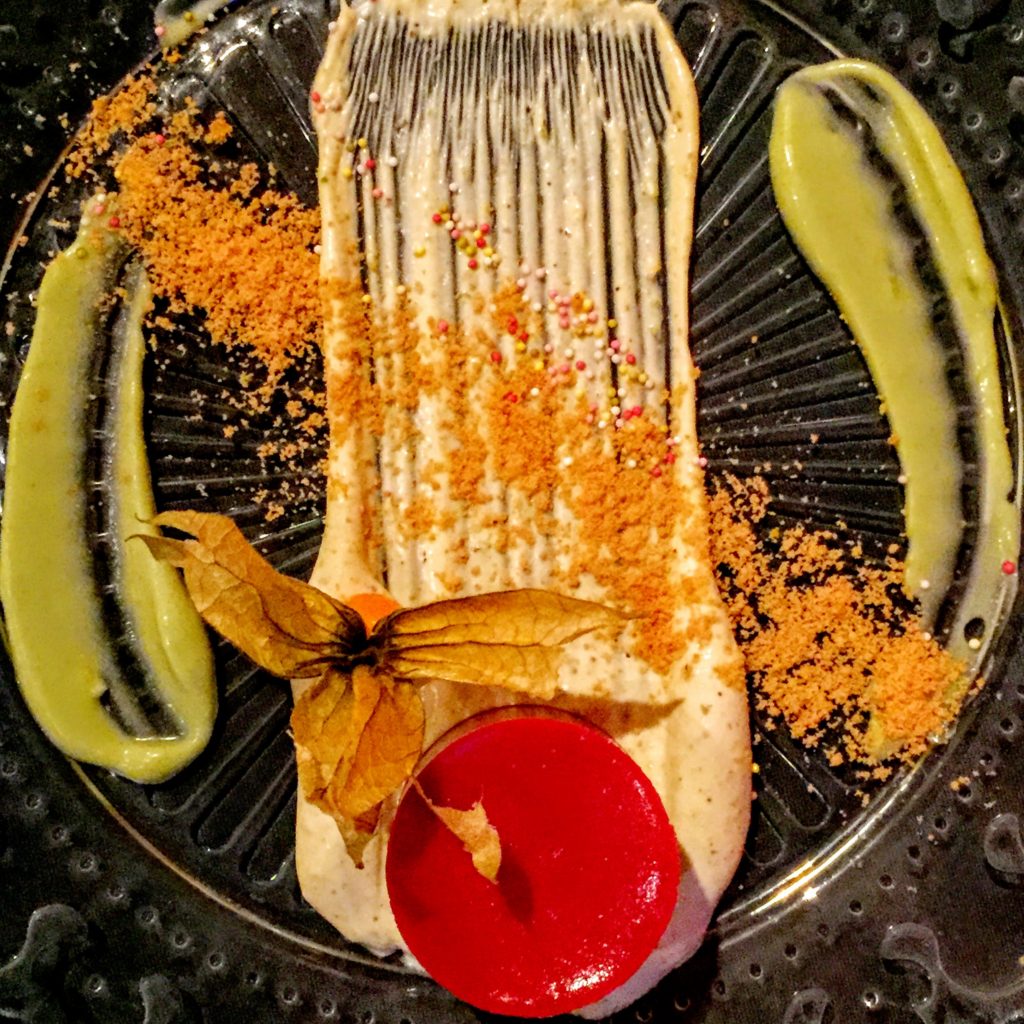
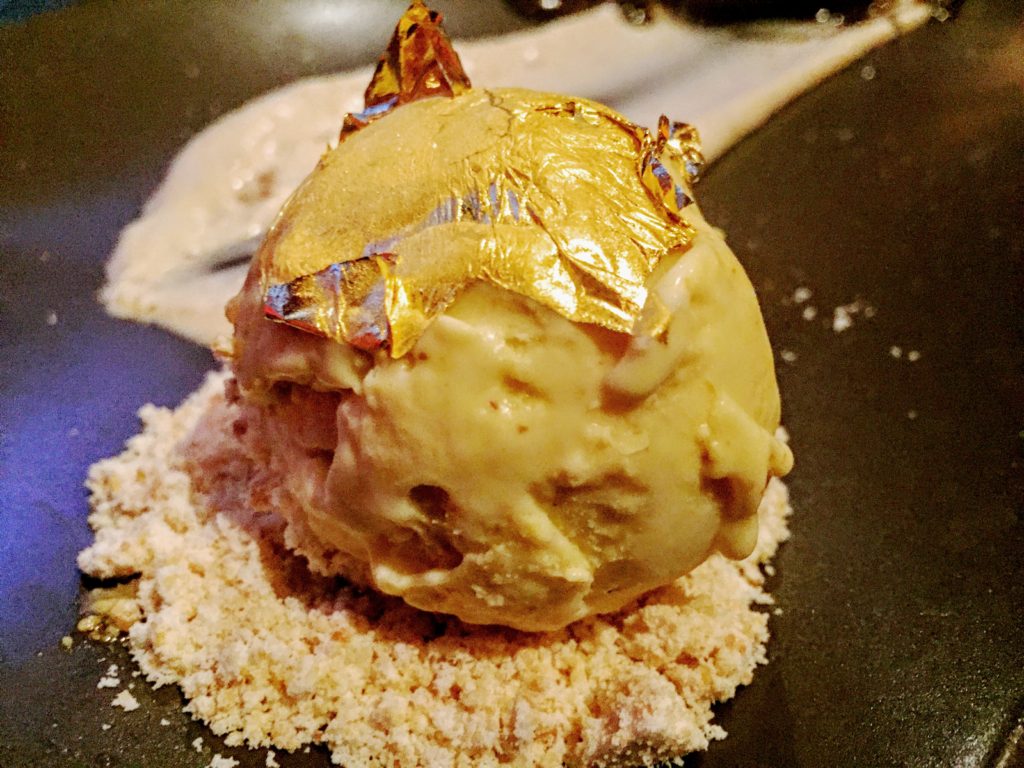
All this while, we were seated in plush red velvet armchairs. The interior kept us hooked between meals, with peacock feathers, tribal masks, golden and jewel-encrusted trinkets, and miniature palm trees distracting us every now and the, and making up just some of the painstakingly detailed pan-global décor that dominates the two small dining areas.
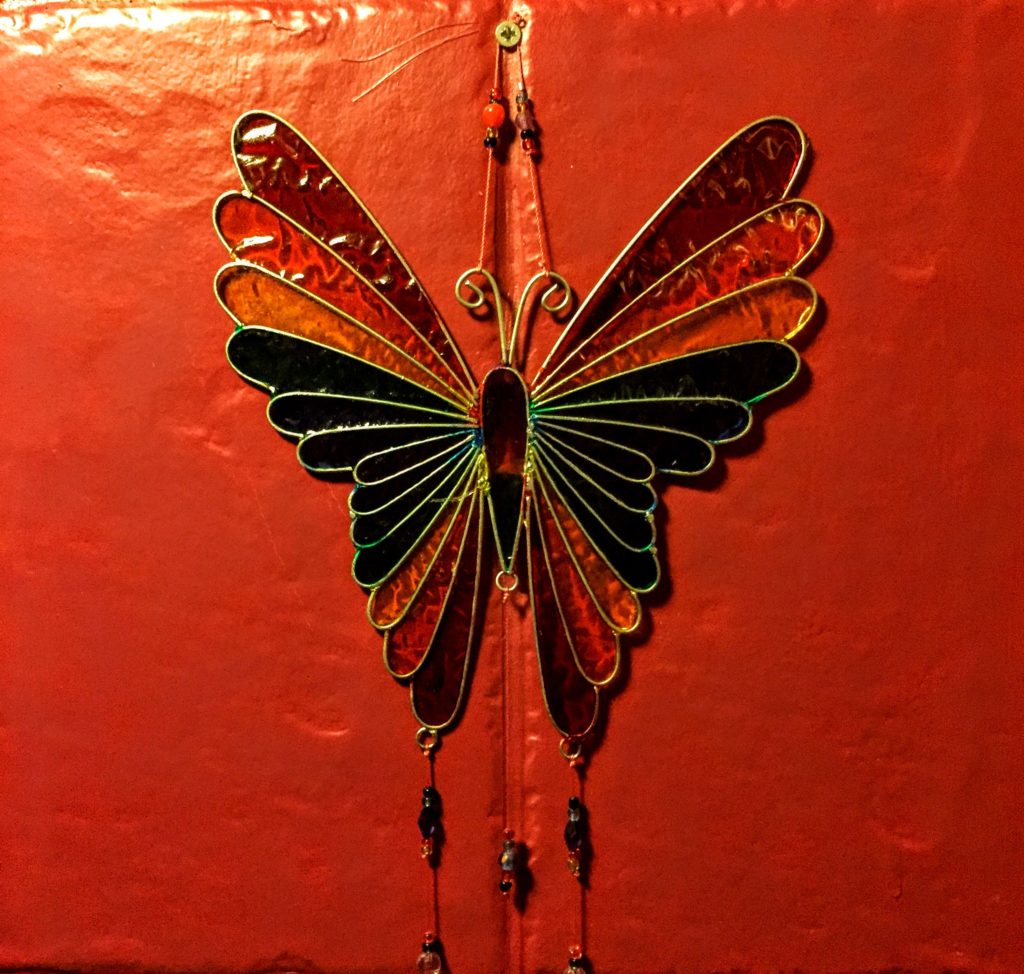
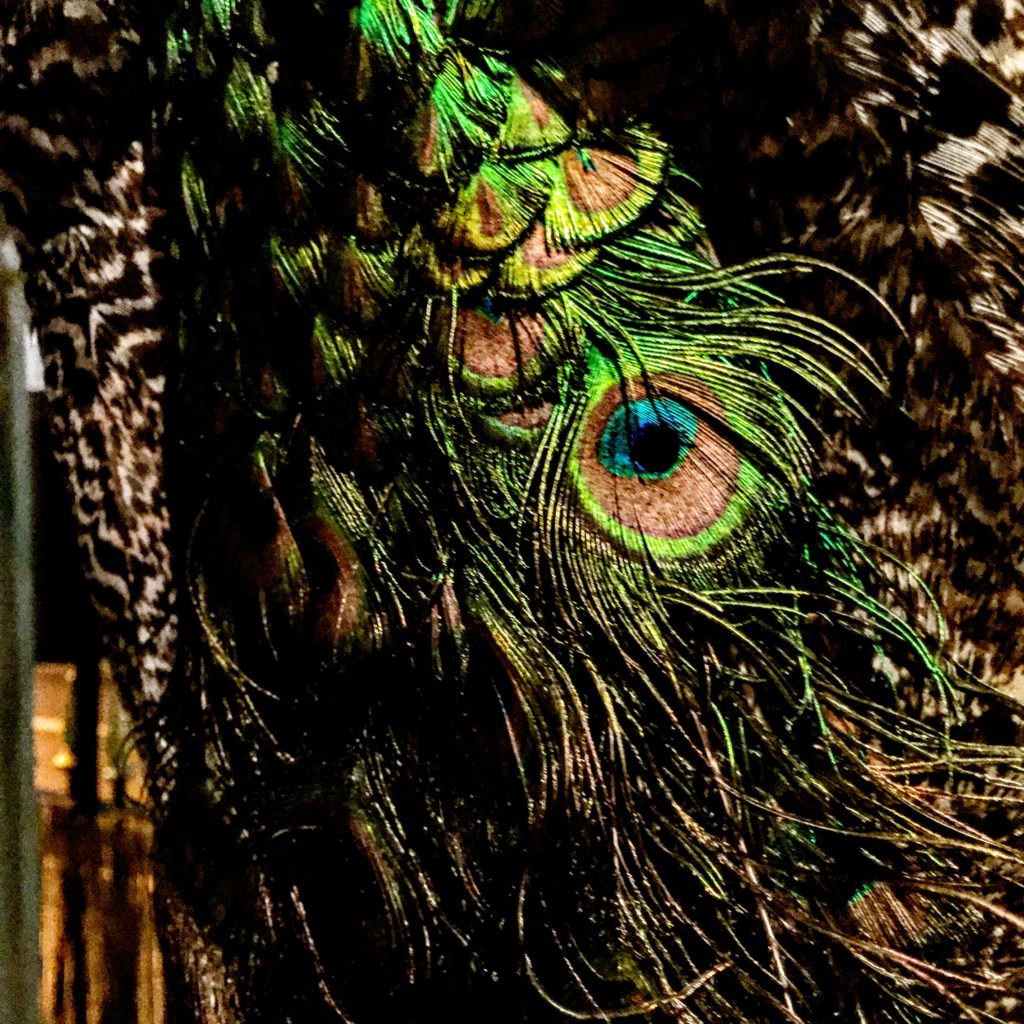
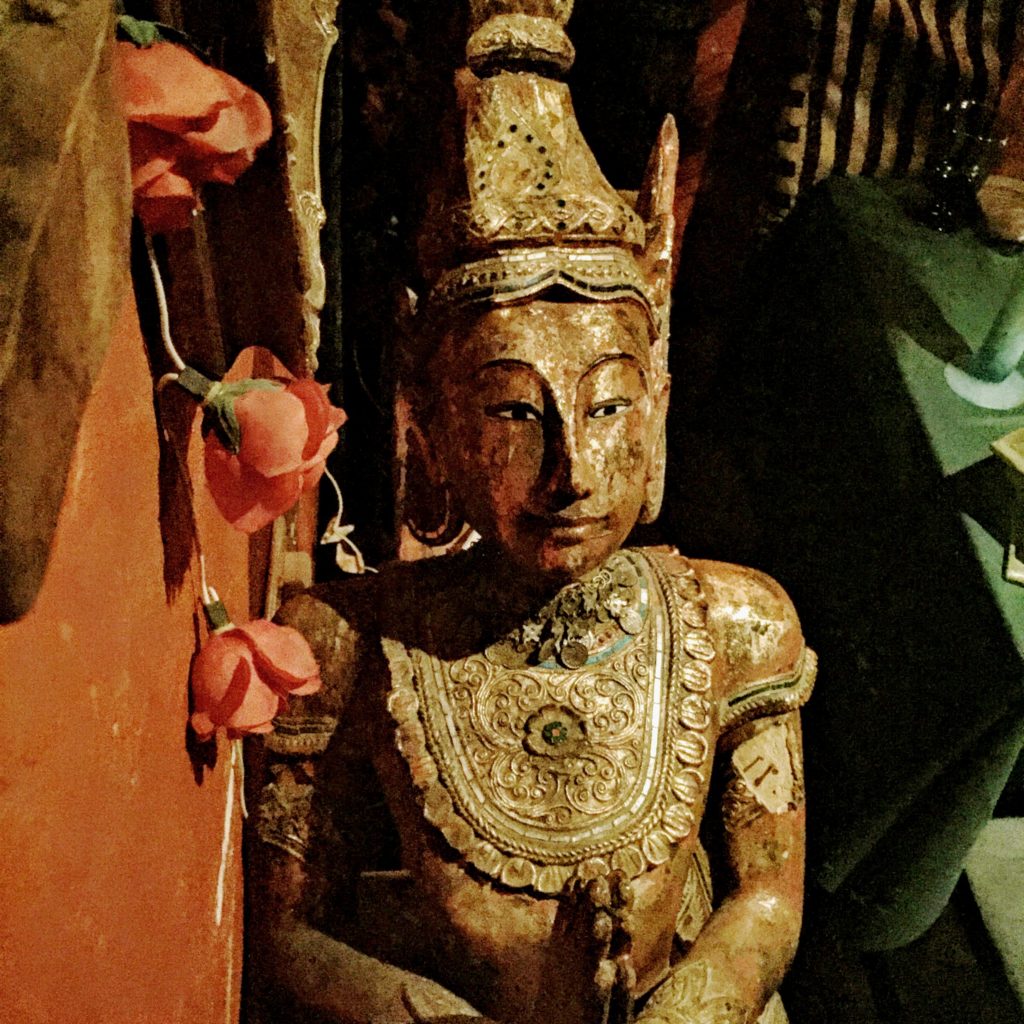
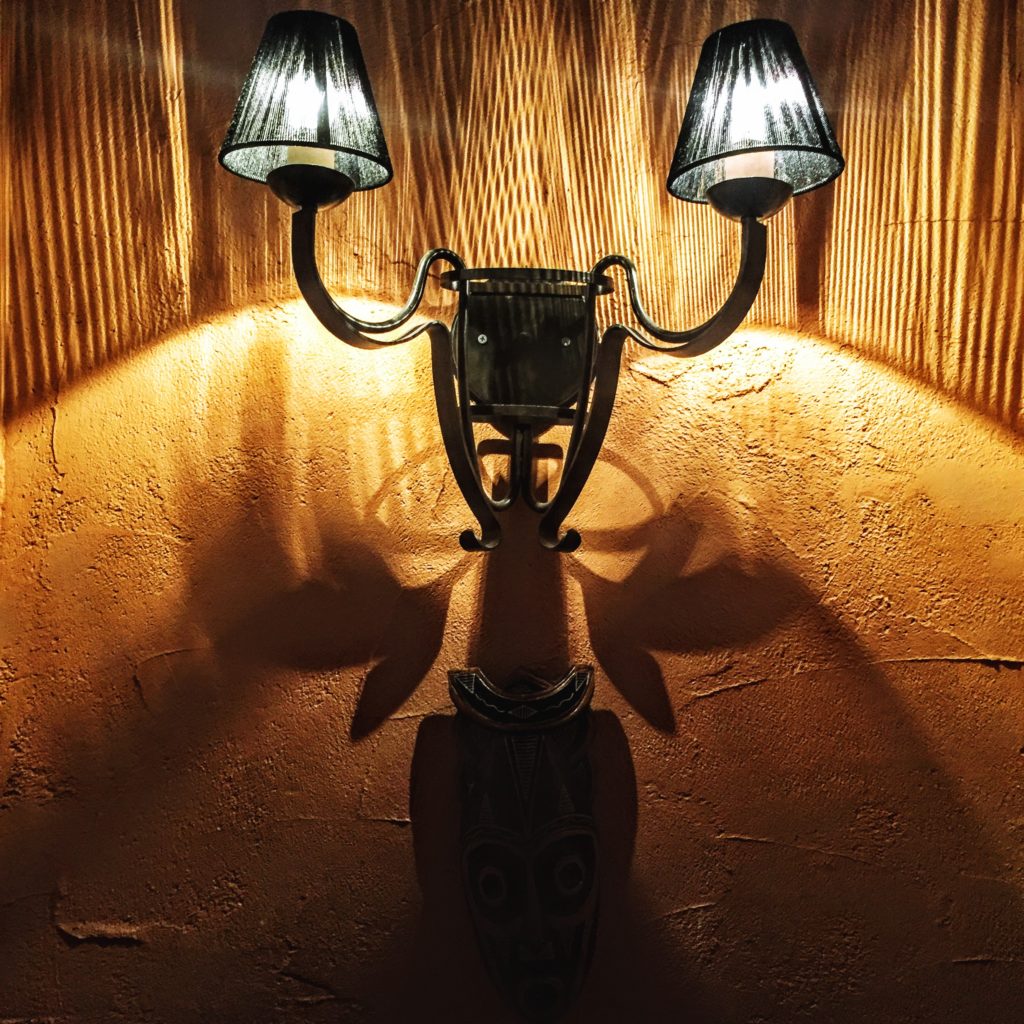
Archipelago transports you to an oasis that could be taken out from a book. And, some moments will be etched in memory in a strange sort of a way. Like the waiter with golliwog hair who stared straight into Fiona’s eyes with a questioning look on all that Fiona uttered-including a replacement of fresh cutlery.
At the end of the restaurant the large golden Buddha which looks down on guests with a calm, meditative gaze and leaving you to question your everyday necessities as you stumble off into the night, satisfied yet certainly eager for more…

Sambrita Basu is a food-fascinated travel writer and photographer based out of Bangalore India. A background and a degree in hospitality and restaurant management paved her interest in food. As the secretary of the institution’s editorial club, she contributed regularly and wrote about food in their annual magazine, A la Carte.
Sambrita has published interviews of celebrity authors and business veterans in international publications like Infineon. Her contributions also include photographs on foods and restaurants of Bangalore for DNA—a leading newspaper publication in Bangalore. Sambrita’s creative expressions transport readers to alleys, hotels, hide-outs, restaurants, attics, and spice markets in several cities across the world.
Sam (as she is popularly known by her friends and family) doesn’t write for a living, but she lives to write.








